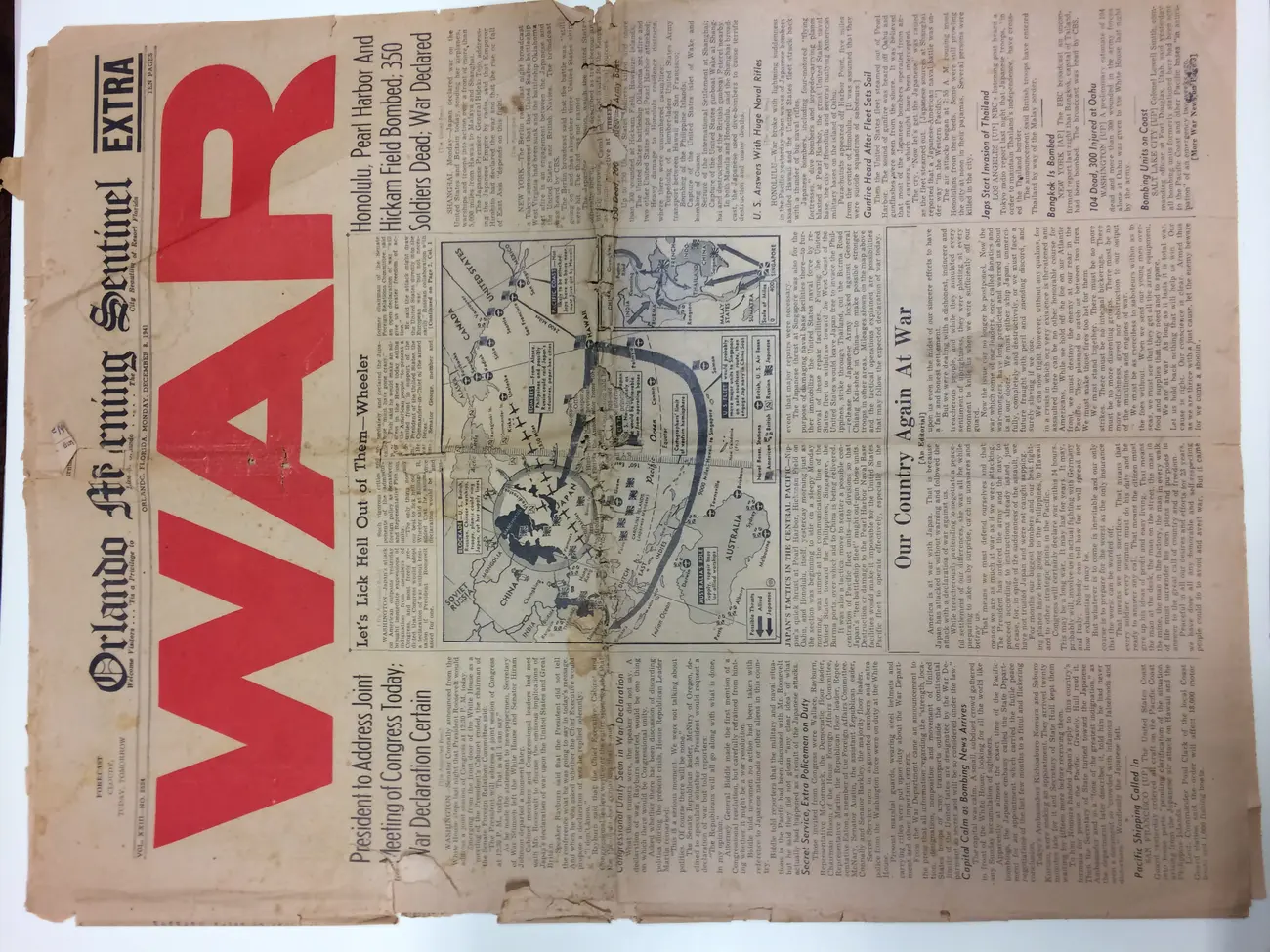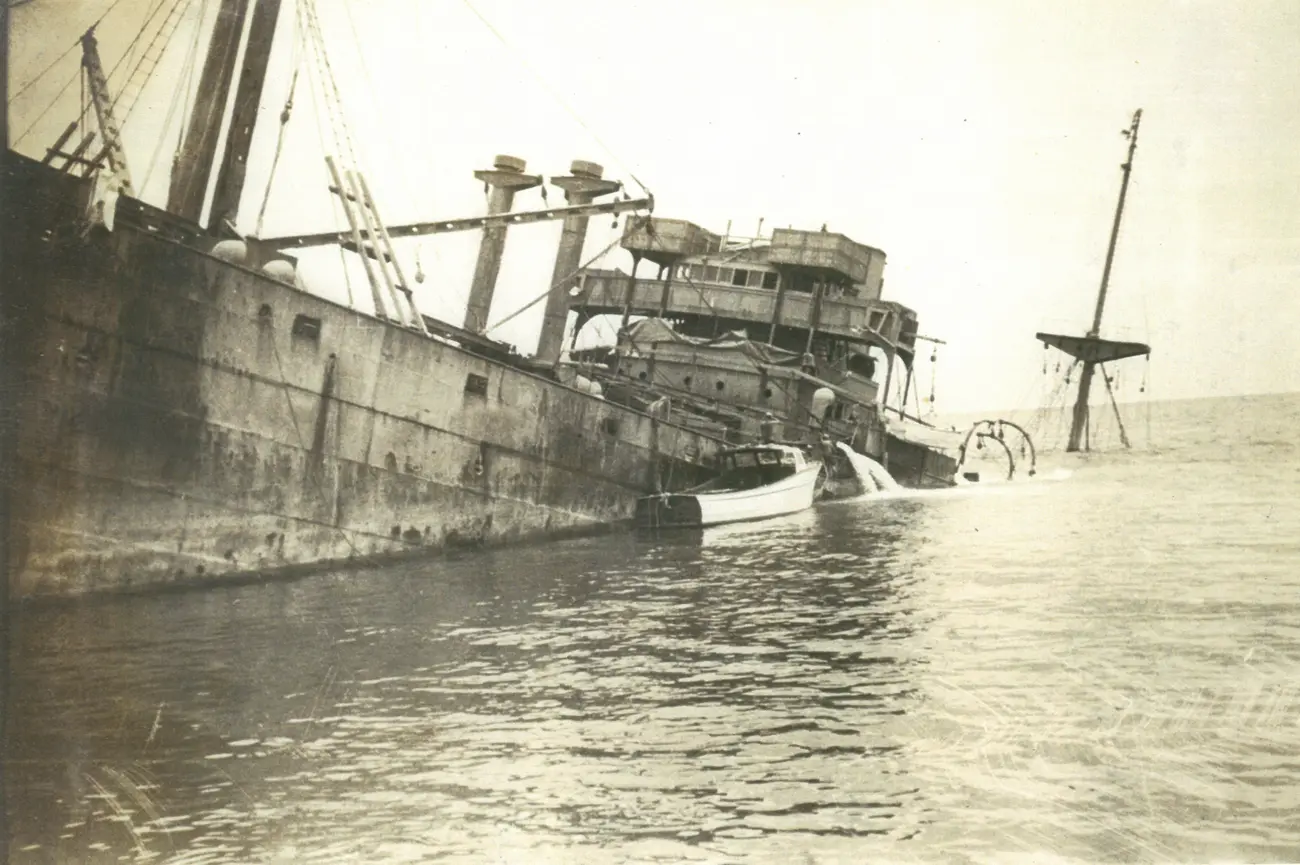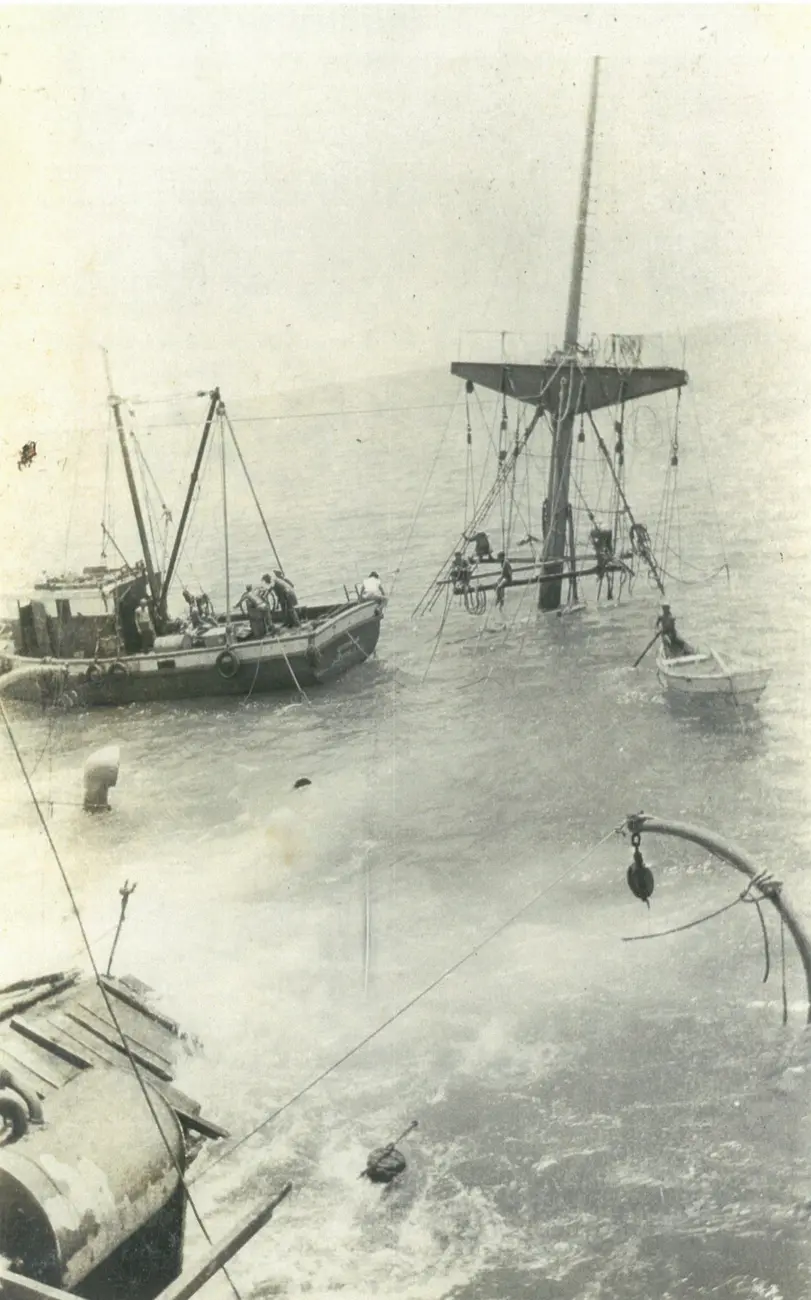The Monday, December 8, 1941, Orlando Morning Sentinel “Extra” edition had a one word headline in bright red block letters nearly four inches tall: WAR.
Front page articles detailed the attack on Pearl Harbor, described the imminent declaration of war on Japan, and outlined what retaliation for the attack might look like.
The paper’s front page editorial stated, “This may be a long war. It may last for years. It may, probably will, involve us in actual fighting with Germany and Italy.”
The editorial went on to say, “That means sacrifice. That means that every soldier, every seaman must do his duty and be ready to answer any call. That means the citizen must give up his ideas of profit and easy living. That means the man…in every walk of life must surrender his own plans and purposes in answer to the great call of country and of freedom.”
Young men in Brevard County were ready to answer the call.
“I remember a friend that used to hunt with my dad that came by the house, and he told us about Pearl Harbor,” says lifelong Brevard County resident George L. “Speedy” Harrell, who was 14 years old in 1941. “A lot of people enlisted in the service right away.”
Harrell was too young to serve in the military immediately after Pearl Harbor, instead earning the nickname “Speedy” playing football as a freshman at Cocoa High School. He remembers everybody making sacrifices during wartime.
“The rationing of everything was set up to conserve what we had,” says Harrell. “Gasoline was rationed weekly based on need. I was a growing boy with big feet, and would have to go to the Rationing Board and explain that I needed a new pair of shoes to get it. Tires for your automobile, you had to go before the Rationing Board and show that you needed a new tire.”
Harrell turned 18 before the war ended, and was sent to serve the U.S. Army in Germany.
Immediately after the United States joined World War II, German submarines began attacking supply ships off the coast of Florida.
“Many cargo ships were sunk off Cape Canaveral and Cocoa Beach by German U-Boats,” said Brevard County resident Bob Cowart in 1988. “The cargo vessels liked to hug the coastline as much as possible in their north-south routes. Since they had to swing far offshore in order to avoid the shallow water off the Cape, that area became one of the favorite spots for the German submarines to torpedo them.”
On May 1, 1942, less than five months after the attack on Pearl Harbor, the British freighter La Paz was torpedoed off Cape Canaveral and towed to Cocoa Beach, where it sank. The stern of the ship rested on the bottom of the ocean, but the bow was visible above the water. The La Paz was raised, towed to Jacksonville, repaired, and returned to service during the war.
“I had the privilege of working on the salvage operation, along with other local 16 and 17 year olds, and will always remember this as a great experience for a kid of that age,” said Cowart.
Many Brevard County residents remember fondly how 900 cases of Johnny Walker Scotch whiskey was “rescued” from the La Paz and brought ashore for locals to enjoy.
Most ships were not salvageable after being torpedoed by the Germans, but their crews were often able to escape on lifeboats. The refugees would travel through Merritt Island and Cocoa on their way home.
“I remember talking to one seaman who said that he had made three voyages out of New York, and that Cocoa Beach was the furthest south he had come before being torpedoed,” Cowart said.
Not all of the crew members of torpedoed ships were so lucky. One ill-fated lifeboat was displayed at the corner of Brevard Avenue and King Street in Cocoa.
“It was riddled with bullet holes by a German sub which surfaced and machine gunned the helpless survivors in the lifeboat,” said Cowart. “Twelve men died in the lifeboat.”
The attack on Pearl Harbor brought the United States into a global conflict that was partially fought along the coast of Brevard County.


